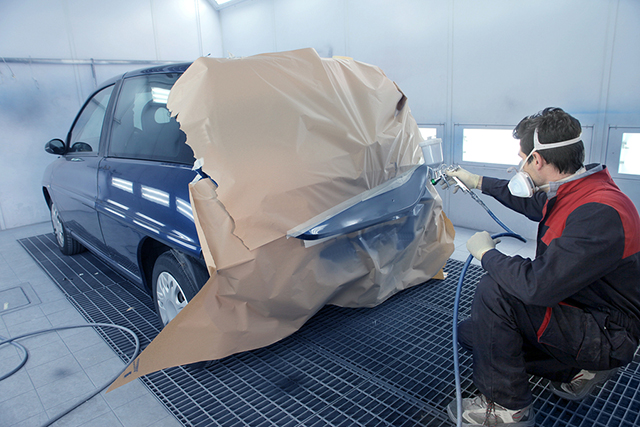Discover the many benefits and advantages of using a hot water repair service

Don’t allow a broken hot water system become a burden. While it is a fact that you depend heavily on your hot water system to run your daily affairs and that its malfunction can frustrate and set back your day, it is also important to know that a number of responsive and highly dependable company specializing in Hot water repairs Perth can come in and resolve any problem you may encounter. Professionals that specialize in Hot water systems Perth can get your system back up and running in little time. You will find nothing but the best, the most experience personnel in dealing with these firms; and they offer you the kind of service that you need to get your life back on track.
Hot water forms such an important part of household work nowadays that it is almost impossible to get along without it. This fact is mostly taken for granted. However, when it stops working properly, you take notice. The most common and ordinary things become very hard to deal with and manage. The proper operation of appliances is a necessary part of ordinary life. Without a functioning hot water system you cannot warm your home in the winter; without an operating boiler you cannot heat your home in winter or do dish washing and clothes washing machines. It becomes very difficult to keep your home clean and well preserved in general. These are all important chores. They are vital to your ability to manage your household. And that is why you must keep your hot water system in good working order if you are to enjoy a smoothly running life.
If you have an emergency with a boiler, the best thing to do is to call someone trained to deal with it. The very worst thing you can do is try to fix it yourself, though it will be quite tempting to do so. However, if you think about it, it is much easier to call an expert, someone who is trained and has the right tools, to fix your broken appliance.
To be sure, not all hot water repair firms deliver the same level of quality. It is also true that not all such repair companies are able to offer the same kind of value in the rates they charge. However, you should go with a repair company that can provide you with both the service you want and the value you deserve.
It is not hard at all to find a company that specializes in hot water system repair. Going online is the best move to make in this regard. It will give you the means to find someone quickly. You will be able to sift through a wide variety of appliance repair companies, so that you can find the one best suited to meet your needs. Working the problem online will help you make the decisions you need to get your appliances repaired in a timely manner, and in a way that guarantees you will not have to call again to get the work redone. This will save you a great deal of time and money.
Vehicle Stickers – Designing Them To Suit Your Marketing Stint
Vehicle stickers have long been used by car owners for varied purposes. In the early times, they are merely utilized for decoration. But nowadays, they are primarily utilized for advertisements. This is because many entrepreneurs have discovered the wonders of using cars for their marketing plans. Obviously, cars are mobile. They can reach out to all kinds of audiences with in a day. They can even get the attention of other motorists and people walking on the streets when they are designed attractively. Absolutesignsolutions.com.au signs Sydney are all cost-effective and professional products, providing visually striking designs at minimal costs.
Are you a business owner who wants to invest on advertisement through cars? The primary consideration for you to note is to have these custom car stickers that suit the interests of your target audience. Your attempt to get noticed and enlarge your customer base would be futile when the sales message incorporated in your car design does not appear impressive. If you do not spend enough time contemplating on the appropriate lay-out for your marketing car, you will end up losing your clients to your opponents in the industry.

From knowing what you got to do, the next step you ought to take is to accept the fact that you need a professional in gearing up your car for your marketing strategy. Never attempt to things on your own for the purpose of saving money. In fact, your resources – time and money – will just go down the drain when you keep committing mistakes on your car design. Let an expert help you with this one. Be sure though to provide a guideline for your chosen printer so that things are done right.
If you do not have a definite plan yet on how you want your vehicle stickers to look like, surf the web for online catalogues that different printing companies provide as reference. Use the appropriate keywords for your search plus the name of your locality. This shall narrow down your search to the whereabouts of potential printers nearby.
As you contact potential printers, you will be presented with all kinds of sticky tags for your car. This can make you lose focus on the design that you want. Thus, it is wise to document what you are looking for in these set of stickers as opposed to choosing randomly from the things presented to you. In the event that your car already have pre-attached stickers which need to be improved, asking the opinion of an expert first would be the most appropriate step to take. Why is this so? Because the removal of these tags might require special procedures that must leave the car surface unharmed.
In general, vehicle stickers that are made of vinyl are the best options for all types of businesses and vehicles too. These materials are great should you plan to use vans or buses for your advertisements since they can cover wide surfaces. More so, vinyl is a durable material that can stand the challenges of the outdoors and all types of weather. All you will need to do is look for a printing company that can customize them according to your marketing needs.
Want The Best Vehicle Stickers For Your Business? Check Us Out [http://www.barneyslabels.com.au/vinyl-cut-lettering.html] To See Some Of Our Samples. You Can Also Visit [http://www.barneyslabels.com.au/] To Get The Best Vehicle Stickers Today.
Article Source: http://EzineArticles.com/expert/Dale_Trent/673218
Article Source: http://EzineArticles.com/7454761
Expert Advice About Auto Repair For Those In Need
Do you worry that you don’t know enough about car repairs? It doesn’t have to be that stressful, though. Keep reading to learn how you can take control of dealing with auto repairs this next time around. The reason that we need a good technology for car paint protection Melbourne is we don’t know someday if we decide to sell our car, so we need to protect and maintain our car paint.
Regularly check your radiator. Allow your car to run for just a few minutes, then shut off the engine, and open up the hood. Never open the radiator while the car is on. Check how much fluid is in the radiator with a dipstick and keep in mind that you should always mix coolant with water before pouring it in your radiator.

You don’t have to get a mechanic in for simple repairs. Many things are able to be fixed easily. If you’d like, you could always conduct some research online to see if you can determine the problem. If the job is not complicated, make the repairs yourself to save money.
Wash your car regularly to prevent rust from becoming a problem. Rust will happen, but you can slow things down by keeping the car clean. Waxing your car helps protect the paint.
The best way to find a good auto mechanic is getting referrals. Ask friends, family or co-workers for recommendations. They will be able to give you a heads up about satisfaction, quality and price. Avoid the mechanics who overcharged your friends or were not honest with them.
If possible, test drive your car prior to paying for repairs. If you do not do this, you may have the same issue when you get home.
Before you bring your car to a repair shop, try to determine what is wrong with your car. You can save a ton of cash via diagnosing the issue yourself, and you could prevent fraud. As you’ve probably heard, there are some mechanics that like to lie about issues to make some more money.
You ought to always have a spare and a jack in the car. Newer cars almost always have them. Stuck on the side of the road with a flat tire is bad news. Stuck without a jack and spare tire is bad news and a big bill. It is much easier and inexpensive to do it yourself.
Keep an eye on all of the warning lights on your dashboard and know what they mean. These lights give you a good indication of when your vehicle needs some maintenance. Do not ignore them, as this can put your safety in danger.
If you see a small problem in your vehicle, you should take your car in to check it out anyway. The problem might get worse if you do not get it fixed quickly, or your diagnosis might not be correct.
Never attempt to diagnose complicated car problems on your own. Cars are complex and it takes expertise to fix them. What may seem to be a simple task can be very complex, especially in the newer electric cars and also the newer computerized vehicles. Let a repair shop do the diagnosing. Give them every detail about what happened and if there were any sounds associated with the problem, and let them diagnose the trouble.
There is a good way to save money if you are willing to take a risk. Instead of taking your car to a repair shop, take it to the local vocational school. You will get an excellent rate and your car will be fixed by an instructor and students in training.
Always bleed the brakes after working on them or preceding a test drive. Pump your brake fluid afterwards. Make sure to watch out for leaks. You can test drive the car safely on low-traffic roads. Start slowly so you can make sure your repairs went well.
Once you have paid a mechanic for replacing a part of your vehicle, ask him or her if you can keep the old part. If the mechanic does not give you your old part, then this is a good indicator that it actually wasn’t replaced. This is not acceptable, and you should tell him so.
It is important to know about the different components of your vehicle so you can easily diagnose where the problem is coming from. If you feel you are lacking in this department, think about signing up for a car repair class. While you may not wish to pay for a class, becoming educated on the basics of cars can save you lots of money later since you’ll know how cars work. This is why it’s a good idea to look for problems and address them before they get serious so your vehicle lasts longer.
Now, you know how to deal with car repairs successfully. Take control and refuse to be hoodwinked by unscrupulous mechanics. The tips you just read should give you a better idea of what to do next time you need some repairs on your vehicle.
Commonly Use Paint Correction
Paint correction is a term that is now commonly used by both professional car detailers and car cleaning enthusiasts worldwide to describe the process of restoring and rejuvenating the paintwork of a vehicle, mostly through the elimination of surface imperfections, that dull, oxidize, or haze the surface by reflecting light off in various directions, therefore detracting from a true and proper, clean, sharp, reflection. A paint protection film like wax keeps everything mother nature can throw at your car away from the paint.
These imperfections include things like swirl marks & fine scratches, bird dropping etching & acid rain etching, hologramming & buffer trails, and random isolated deep scratches (or RIDS). The term paint correction should only really be used if these imperfections are properly removed and are not just merely covered up or hidden with filler based products.

The actual corrective process itself comprises of a small amount of clear coat or paint being removed from the surface with the use of abrasive polishes, which are applied and worked in with appropriate polishing machines, in order to level out the surface.
Before any paint correction is undertaken, a thorough wash and decontamination of the vehicle is performed. Paintwork is properly washed and cleaned to remove any loose dirt and debris, then after the wash process is clayed with a specialist automotive clay bar, which safely removes any bonded surface contaminants such as tar spots and industrial fallout.
It is important these contaminants are removed before the paint correction process because if they were to become dislodged and caught up in the pad of a polishing machine, they could easily inflict damage onto the surface very quickly. It also helps to leave the surface very smooth, which in turn, allows the polishing machine to move freely over the surface, reducing the possibility of hopping or sticking occurring. Lastly, claying the paintwork helps you to properly observe the progress of the correction process because you can see the true condition of the surface as you are working.
The polishing is usually a multistage process as a range of different grades of polish are used, ranging from heavier cutting compounds, which remove the surface material, to finer products which then remove any marks that the heavier products may have inflicted and generally refine the finish.
During the paint correction process it is common for a paint depth gauge to be used. This measures the thickness of the paint on the metal panel and is used before, during and after the process to monitor how much material is being removed and ensure an excess is not removed which could leave the paint too thin or even cause irreversible damage such as a strike through the paint. Specialist halogen or LED lamps which replicate the effect of direct sunlight on the surface are also used during the process to check the condition of the paintwork and see how successfully the surface scratches and imperfections are being removed.
Some scratches or imperfections may actually be too deep or severe to safely remove without risking removing to much surface paint or clear coat and so are minimized and reduced as best as possible using techniques with the machine polisher and polish products that round off the edges of the scratches and make them far less apparent in direct light.
After correction, the panels are wiped down with an isopropyl alcohol which removes any oils that may have been left over from the polish and reveals the true finish, including any areas that may have been missed or require a little more work. Once complete, fully corrected paintwork will shine brilliantly and produce stunning reflections because there are now no longer any scratches and imperfections to scatter and reflect the light rays off in different directions.
Paint correction is a very labor intensive process and is usually the most time consuming part of the car detailing process. Consequently, it commands high premiums from professional detailers & car cleaners, and amateurs or enthusiasts should only attempt to correct their own paintwork if they are completely confident in doing so or have enough experience to carry it out safely.
In conclusion, paint correction is the process of removing surface scratches and imperfections from a vehicles paintwork, which involves the use of machine polishers and a range of different polish products. A fully corrected vehicle when viewed in direct sunlight will show only true reflections and no swirl marks, scratches or blemishes will be visible to the naked eye.
Lastly, it is important to distinguish between paintwork that has been truly corrected and paintwork that has been treated with products that are designed to mask and fill surface imperfections such as an all in one polish for example. This should not be referred to as paint correction even if no scratches or blemishes are apparent, because they have not been genuinely removed and are still present under the products fillers, which in time, will wash away and reveal them once more.
For More Car Detailing Articles and to Discover How to Clean Your Car to a Professional Standard Yourself, Visit Car Cleaning Guru Today.
Article Source: http://EzineArticles.com/expert/Joe_Mcdonald/600915
Article Source: http://EzineArticles.com/5698718
